Ancient City Of Laodicea With One Of ‘Seven Churches Of Asia’ Founded By The King Antiochus II
A. Sutherland - AncientPages.com - The seventh and final letter to the churches of ancient Asia Minor is to the church in Laodicea, a significant hub of Christianity. Ancient city of Laodicea contained one of the Seven churches of Asia mentioned in the Book of Revelation.
The biblical Laodicea was designated "Laodicea on the Lycus" (Laodicea ad Lycum).
It was founded by the Seleucid king Antiochus II, a king of the Hellenistic Seleucid Kingdom who reigned 261 BC–246 BC) and named for his wife Laodice about 260 BC. The city had a beautiful location in the middle of the Lycus Valley and between Colossae (nine miles to the southeast) and Hierapolis (six miles to the north) - both cities mentioned in Paul's letter to the Colossians.
He rebuilt the city and populated it with Syrians and Jews who migrated from Babylonia.
Laodicea was a wealthy, dynamic city in the province of Phrygia in the Lycos Valley, located together with Hierapolis and Colossae in the Lycus River Valley.
The Laodicean Church in the ancient city of Laodicea, known as "one of the "Seven Churches of Asia" and mentioned in the Bible, is nearly a 1,700-year-old unique structure, which survived despite the city's total collapse due to an earthquake in the 7th century AD.
Laodicea is mentioned several times in the New Testament, in both Paul's letter to the Colossians (2:1, 4:13–16) and the Book of Revelation, in which it is one of the seven churches in Asia [Minor] to receive the message revealed to John that the "time is near" (Revelation 1:3, 11, 3:14–22).
 The early church at Laodicea. Photo: Dr. Celal Simsek from Pamukkale University/Laodikeia excavation.
The early church at Laodicea. Photo: Dr. Celal Simsek from Pamukkale University/Laodikeia excavation.
The apostle Paul makes at least four references to the city in his epistle to the Colossians. Interestingly, he references the town though he had never visited it.
1. Now I want you to understand what great concern I have for you, and for those in Laodicea and as many as have not seen my face in the flesh (Col. 2:1)
2. For I bear witness to him (Epaphras, a preacher who was pivotal in the conversion of many people in Colossae) that he has much zeal for you, those in Laodicea, and those in Hierapolis (4:13).
3. 15 Give our best wishes to the believers in Laodicea, Nympha, and the church that meets in her house.
The archaeological site of Laodicea. The photo shows the Central Baths. Credit: A.Savin - Free Art License
4. 16 After you read this letter, ensure it is also read in the church at Laodicea. At the same time, you are to read the letter the believers in Laodicea will send you. (4:15, TEV)
Paul's letter suggests that Laodicea had a very early Christian community with close ties to the one in Colossus (11 mi away), possibly having been evangelized by Paul's disciple Epaphras, who is mentioned by name in the epistle.
Laodicea, located at the junction of several important trade routes, is 77 kilometers (48 miles) from Philadelphia (Alasehir) and 155 kilometers (96 miles) from Ephesus.
Laodicea – one of Asia Minor's most flourishing cities – was built upon seven hills. The city minted coinage and some inscriptions showing evidence of the worship of the pagan deity Zeus and the emperors.
According to first-century Greek historian Strabo, Laodicea was also home to a well-known medical school. At the same time, this wealthy town was known as a strategic banking center.
Wealth was used to pay for the city's reconstruction after a devastating earthquake in 60 AD, rejecting offers of financial aid from Rome.
Laodicea was the most prosperous city in the region, surrounded by other wealthy cities. Its architecture and impressive and massive buildings decorated the city. Laodicea had not only one theater (as in all other cities) but even two. It also had a large stadium that could accommodate up to 60,000 people. The city had four agoras (marketplaces) with space for more than 4,500 shops.
The city was also associated with the textile industry focusing on black sheep wool production.
It was also known for its famous medical school researching eye diseases and producing the so-called "Phrygian powder" for treating eye diseases.
Remains from the Hellenistic and Roman periods include:
- Two theaters.
- A stadium and a nymphaeum.
- A monumental fountain that continued in use into the Byzantine period (fourth–seventh centuries) when it was walled off and converted into a Christian structure.
The city often suffered from earthquakes. It was destroyed when an earthquake occurred during the reign of Emperor Nero. The inhabitants of Laodicea declined Roman assistance to rebuild the city and instead used their own money to rebuild the town quickly.
At the end of January 2011, a large, well-preserved church was found at Laodicea using ground-penetrating radar. According to excavation director, Celal Simsek of Pamukkale University, the church was built during the reign of Constantine (306–337) and destroyed by an earthquake in the early seventh century. There are 11 apses—one facing east and five each on the northern and southern sides.
Floral and geometric mosaics, as well as opus sectile pavement, cover the floors. The cross-shaped marble baptistery, located at the end of a long corridor on the north side of the church, is one of the oldest and best-preserved ever discovered.
Written by – A. Sutherland AncientPages.com Senior Staff Writer
Updated on July 17, 2023
Copyright © AncientPages.com All rights reserved. This material may not be published, broadcast, rewritten or redistributed in whole or part without the express written permission of AncientPages.com
Expand for referencesReferences:
Rick Renner, Christ's Message to Laodicea Study Guide
Pastor Andy Thomas, The Rise of Laodicea
More From Ancient Pages
-
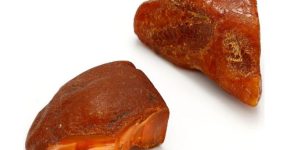 Bronze Age Long-Distance Connections: Baltic Amber In Aššur
Archaeology | May 17, 2023
Bronze Age Long-Distance Connections: Baltic Amber In Aššur
Archaeology | May 17, 2023 -
 Neanderthals Invented Or Developed Birch Tar Making Technique Independently From Homo sapiens
Archaeology | May 30, 2023
Neanderthals Invented Or Developed Birch Tar Making Technique Independently From Homo sapiens
Archaeology | May 30, 2023 -
 Fionn Mac Cumhail: Legendary Irish Hero, Clairvoyant And Leader Of Fianna Warriors
Celtic Mythology | Oct 11, 2019
Fionn Mac Cumhail: Legendary Irish Hero, Clairvoyant And Leader Of Fianna Warriors
Celtic Mythology | Oct 11, 2019 -
 Myth Of The Pale Sun Followed By A Catastrophe Confirmed By Archaeologists
Featured Stories | Sep 22, 2024
Myth Of The Pale Sun Followed By A Catastrophe Confirmed By Archaeologists
Featured Stories | Sep 22, 2024 -
 Ancient Mystery Of America’s Missing Metal – Can The Answer Be Found In Ancient Europe?
Ancient Mysteries | May 18, 2018
Ancient Mystery Of America’s Missing Metal – Can The Answer Be Found In Ancient Europe?
Ancient Mysteries | May 18, 2018 -
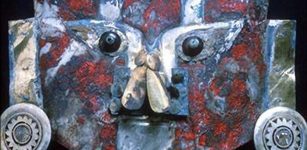 Red Paint On 1,000-Year-Old Gold Mask From Peru Contains Human Blood Proteins
Archaeology | Nov 1, 2021
Red Paint On 1,000-Year-Old Gold Mask From Peru Contains Human Blood Proteins
Archaeology | Nov 1, 2021 -
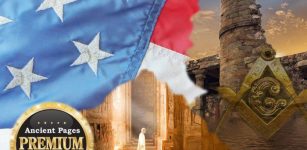 Freemasons Secrets – American Democracy Is Part Of An Ancient Universal Plan – Secret Societies’ Role – Part 3
Ancient Mysteries | Jul 14, 2018
Freemasons Secrets – American Democracy Is Part Of An Ancient Universal Plan – Secret Societies’ Role – Part 3
Ancient Mysteries | Jul 14, 2018 -
 Mystery Of Acoma – Sky City Of And People Of The White Rock Reveal A Surprise
Ancient Mysteries | Aug 16, 2018
Mystery Of Acoma – Sky City Of And People Of The White Rock Reveal A Surprise
Ancient Mysteries | Aug 16, 2018 -
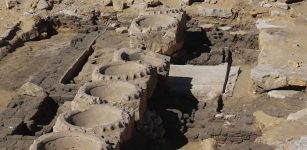 4,500-Year-Old Lost ‘Sun Temple’ Dedicated To God Ra Unearthed In Abu Gorab Necropolis
Archaeology | Aug 4, 2022
4,500-Year-Old Lost ‘Sun Temple’ Dedicated To God Ra Unearthed In Abu Gorab Necropolis
Archaeology | Aug 4, 2022 -
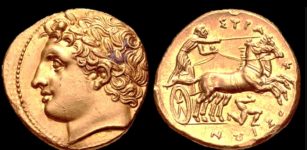 Agathocles Of Syracuse: Sicilian Ruler Who Committed Numerous Crimes Saved And Extended Sovereignty Of Sicily
Featured Stories | Jul 26, 2019
Agathocles Of Syracuse: Sicilian Ruler Who Committed Numerous Crimes Saved And Extended Sovereignty Of Sicily
Featured Stories | Jul 26, 2019 -
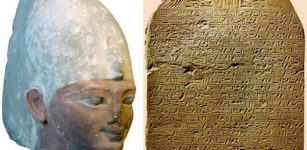 How The Hyksos Invasion Of Ancient Egypt Changed History
Civilizations | Oct 26, 2016
How The Hyksos Invasion Of Ancient Egypt Changed History
Civilizations | Oct 26, 2016 -
 Mysterious Ancient Remains Of The Lady In The Well – An Archaeological Detective Story
Archaeology | Sep 11, 2020
Mysterious Ancient Remains Of The Lady In The Well – An Archaeological Detective Story
Archaeology | Sep 11, 2020 -
 Prehistoric Dispilio: Accurately Dating Ancient Site To 5259 BC Using Cosmic Rays
Archaeology | May 21, 2024
Prehistoric Dispilio: Accurately Dating Ancient Site To 5259 BC Using Cosmic Rays
Archaeology | May 21, 2024 -
 Simple 1,000-Year-Old Medieval Medicine Cure Can Treat Modern Infections – Study Shows
Civilizations | Jul 28, 2020
Simple 1,000-Year-Old Medieval Medicine Cure Can Treat Modern Infections – Study Shows
Civilizations | Jul 28, 2020 -
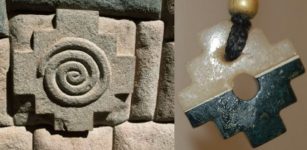 Mysterious Chakana – Sacred Inca Cross And Its Connection To The Southern Cross Constellation
Ancient Symbols | Sep 15, 2018
Mysterious Chakana – Sacred Inca Cross And Its Connection To The Southern Cross Constellation
Ancient Symbols | Sep 15, 2018 -
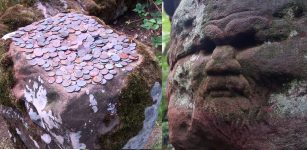 Dunino Den: Mysterious And Sacred Ancient Site In Scotland With Enigmatic Rock Faces And Symbols
Featured Stories | Jan 6, 2017
Dunino Den: Mysterious And Sacred Ancient Site In Scotland With Enigmatic Rock Faces And Symbols
Featured Stories | Jan 6, 2017 -
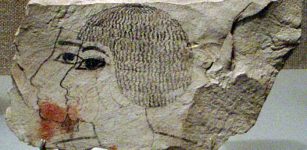 Tomb Of Senenmut And Earliest Known Star Map In Ancient Egypt
Civilizations | Nov 17, 2016
Tomb Of Senenmut And Earliest Known Star Map In Ancient Egypt
Civilizations | Nov 17, 2016 -
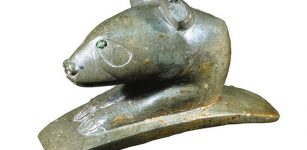 Use Of Tobacco Pipes By Hopewell People Tells A New Story
Archaeology | Jun 28, 2021
Use Of Tobacco Pipes By Hopewell People Tells A New Story
Archaeology | Jun 28, 2021 -
 Nude Athletes And Fights To The Death: What Really Happened At The Ancient Olympics
Featured Stories | Aug 2, 2024
Nude Athletes And Fights To The Death: What Really Happened At The Ancient Olympics
Featured Stories | Aug 2, 2024 -
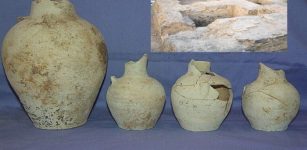 Stone Water Well Dated To Sassanid Era (224-651 CE) Unearthed In Isfahan Hills, Iran
Archaeology | Jun 26, 2020
Stone Water Well Dated To Sassanid Era (224-651 CE) Unearthed In Isfahan Hills, Iran
Archaeology | Jun 26, 2020


